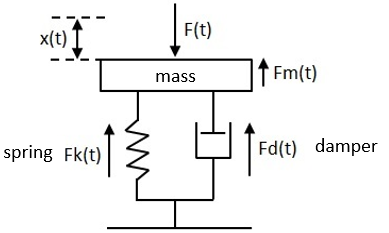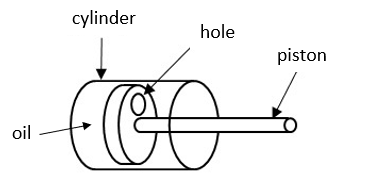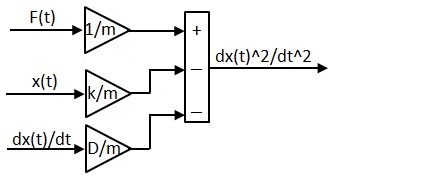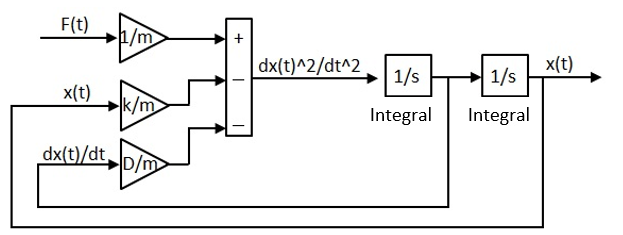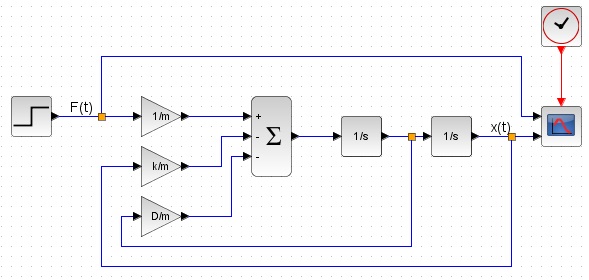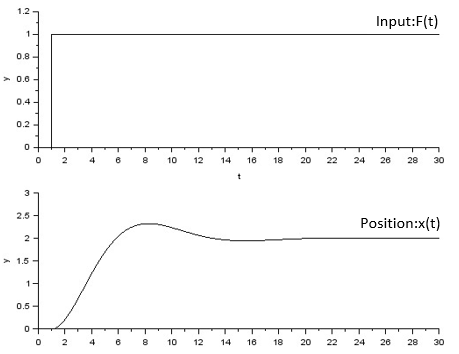Mass-spring-damper model |
|||||||
・Force,torque,work,power ・Centrifugal Force ・Acceleration ・Mass-spring-damper ・Moment of inertia ・Inverted pendulum ・Differential eq. for motors ・Slope angle ・Frictional force |
・In Japanese
■Differential equation of spring mass damper system
I will explain how to derive the equation of motion or differential equation of the spring mass damper system, build a model of the spring mass damper, and confirm the operation by simulation.
Find the displacement x (t) when the force F (t) is applied to the spring mass damper system as shown in the figure below.
The forces applied to each are as follows. <Spring equation of motion>
According to Hooke's law, the force applied to the spring is proportional to the spring constant k and the displacement amount x (t) of the spring, so it is as follows. <Damper equation of motion>
A damper is a part that is attached to a car suspension, for example, and is also called a shock absorber (vibration damping device).
The image is like a piston with oil inside a cylindrical part, and even if you push the piston all the way, it does not move immediately, and this plays a role of shock absorption.
The image is as follows. <Mass Equation of motion>
A mass is just an object with mass, and the relationship between the force "Fm" applied to an object with mass "m" and the acceleration "a" is as follows according to Newton's equation of motion. <Conclusion of differential equations of spring mass damper system>
By substituting equations (2), (3) and (4) into (1), we were able to derive the differential equation of the spring mass damper. ■Designed a spring mass damper model with Scilab
A little technique is required to design equation (5) with Scilab. Since we want to finally find the displacement amount x (t) when a force is applied, we transform Eq. (5) as follows. ■Simulation result of the operation of the spring mass damper system
The simulation results and each parameter are as follows.
|
|
|||||
